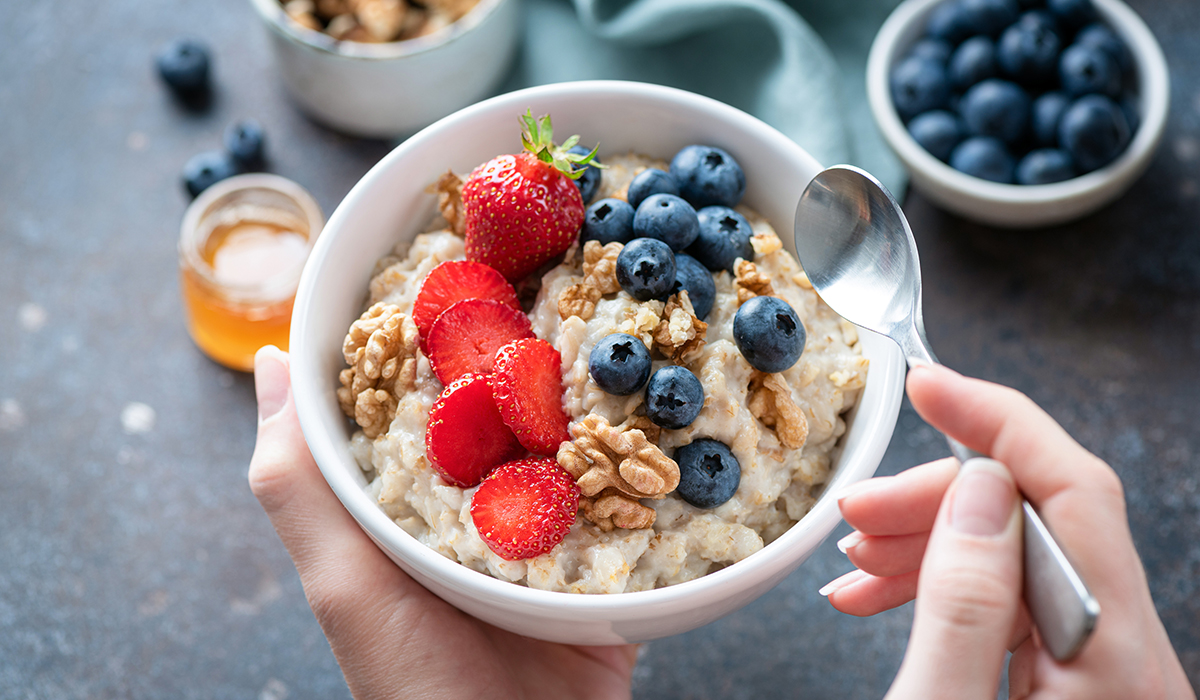March 2024
Your body requires a steady supply of vitamins and minerals to stay healthy and work properly. From supporting your immune system to fueling your metabolism, these micronutrients are essential for every aspect of your health.
But some people may not get enough of the necessary vitamins and minerals from their diets. Here are some common nutrient deficiencies — and signs that you might need help from a healthier diet or a supplement.
Vitamin D
Only a few foods are high in vitamin D. And although you can make some vitamin D from sunlight, limiting sun exposure is vital to reducing skin cancer risk. Therefore, it’s not unusual to get inadequate amounts of this vitamin.
Low vitamin D levels are most common in:
- Older adults
- People with dark skin
- People with digestive health conditions that affect vitamin absorption, like irritable bowel disease (IBD) or celiac
- People with excess body fat
Vitamin D is essential for bone health, but it also affects immunity and mood. Signs you might have low levels of this vitamin include bone or muscle pain, weakness, fatigue, and mood changes.
To boost your levels, try to eat more vitamin D-rich foods, which include salmon, egg yolks, and fortified milk or cereal. You can also take a supplement. The U.S. RDA for vitamin D is 600 IU (15 mcg) daily for adults aged 70 and younger or 800 IU (20 mcg) daily for adults over 70.
Iron
You need iron to make healthy red blood cells. More specifically, iron is needed to make hemoglobin, the protein in red blood cells that carries oxygen throughout your body.
Iron deficiency causes anemia, a common condition in pregnant women and those with heavy menstrual periods. Signs that you’re low in iron include fatigue, weakness, headaches, and shortness of breath.
Your doctor will likely check your red blood cell count and hemoglobin as part of your annual wellness exam. If one or both of these are low, your doctor may run another test to see if your iron stores are low. If they are, you may need a supplement.
You can also get more iron from foods like …
- Fortified breakfast cereals
- Beans (legumes)
- Spinach
- Tofu
- Beef
- Chicken
- Seafood
The U.S. RDA for iron varies by age, sex, and whether you’re pregnant. Pregnant women need the most iron — 27 mg a day. Adult women up to age 50 need 18 mg of iron daily. All men and women aged 51 and older need 8 mg a day.
Vitamin B12
Vitamin B12 is essential for healthy nerve function and for building red blood cells and DNA. The U.S. RDA for vitamin B12 is 2.4 mcg a day for adult men and women, unless you’re pregnant or breastfeeding.
Pregnant teens and women need 2.6 mcg, and those who are breastfeeding need 2.8 mcg a day.
This vitamin primarily comes from animal foods, so those who follow vegan diets — or vegetarian diets with limited amounts of eggs and dairy — are at high risk for deficiency. Also, most people absorb less vitamin B12 from foods as they age, so older adults are more likely to have low levels.
Other at-risk groups include …
- People with diabetes or prediabetes who take the drug metformin
- People with GI conditions that affect vitamin absorption, like IBD or celiac
Symptoms of a vitamin B12 deficiency can include …
- Feeling weak or tired
- Memory problems
- Numbness or tingling in your hands, feet, or legs
Tell your healthcare provider if you have these symptoms or are at risk for low vitamin B12. They can do a blood test and tell you if you need a supplement. You can also boost your vitamin B12 levels by eating more of these foods:
- Fortified nutritional yeast
- Fortified cereals
- Meats, poultry, and seafood
- Dairy foods (milk, cheese, and yogurt)
- Eggs
Magnesium
You need this mineral for over 300 functions, from building proteins to regulating blood sugar, muscles, nerves, and blood pressure. It’s available in a wide range of whole foods but missing from highly processed foods.
The U.S. RDA for magnesium varies by age, sex, and whether you’re pregnant.
- Men need 400-420 mg each day
- Women need 310-320 mg each day
- Pregnant teens need 400 mg each day
- Pregnant women need 350-360 mg each day
- Breastfeeding teens need 360 mg each day
- Breastfeeding women need 310-320 mg each day
Most people aren’t magnesium deficient, but it’s common to have lower-than-desired levels. The people who are most at risk include …
- Older adults
- People with alcohol use disorder
- People with diabetes
- People with GI conditions that affect mineral absorption
- People who eat mainly processed, packaged, and fast foods
Over time, inadequate magnesium can increase your risk of chronic health conditions, like diabetes, high blood pressure, heart disease, and osteoporosis. To get more magnesium, skip highly processed foods and eat more …
- Nuts, seeds, and peanut butter
- Beans (legumes)
- Spinach and broccoli
- Yogurt
- Whole grains (such as oats, whole-wheat bread, and brown rice)
Eating a healthy diet most of the time is the best way to optimize your nutrient intake. Taking a multivitamin-mineral supplement can provide extra insurance to help prevent deficiencies.



